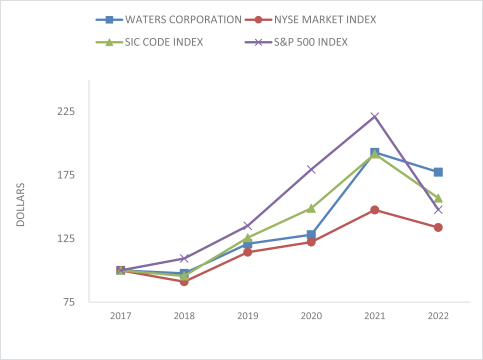goods imported into the U.S. and impacting our ability to sell our products in China and other affected countries. Accordingly, our financial position or results of operations can be adversely influenced by political, economic, legal, compliance, social and business conditions in China generally.
Additionally, the U.S. dollar value of the Company’s net sales, cost of sales, operating expenses, interest, taxes and net income varies with foreign currency exchange rate fluctuations. Significant increases or decreases in the value of the U.S. dollar relative to certain foreign currencies, particularly the euro, Japanese yen, British pound and Chinese renminbi, could have a material adverse effect or benefit on the Company’s results of operations or financial condition.
From time to time, the Company enters into certain foreign currency exchange contracts that are intended to offset some of the market risk associated with sales denominated in foreign currencies. We cannot predict the effectiveness of these transactions or their impact upon our future operating results, and from time to time they may negatively affect our quarterly earnings.
Global economic conditions may have an adverse effect on the demand for, and supply of, the Company’s products and harm the Company’s financial results.
The Company is a global business that may be adversely affected by changes in global economic conditions such as changes in the rate of inflation (including the cost of raw materials, commodities and supplies) and interest rates. Both our domestic and international markets experience varying degrees of inflationary and interest rate pressures. These changes in global economic conditions may affect the demand for, and supply of, the Company’s products and services. This may result in a decline in sales in the future, increased rate of order cancellations or delays, increased risk of excess or obsolete inventories, longer sales cycles and potential difficulty in collecting sales proceeds. There can be no assurance regarding demand for the Company’s products and services in the future.
Disruption in worldwide financial markets could adversely impact the Company’s access to capital and financial condition.
Financial markets in the U.S., Europe and Asia have experienced times of extreme disruption, including, among other things, sharp increases in the cost of new capital, credit rating downgrades and bailouts, severely diminished capital availability and severely reduced liquidity in money markets. Financial and banking institutions have also experienced disruptions, resulting in large asset write-downs, higher costs of capital, rating downgrades and reduced desire to lend money. There can be no assurance that there will not be future deterioration or prolonged disruption in financial markets or financial institutions. Any future deterioration or prolonged disruption in financial markets or financial institutions in which the Company participates may impair the Company’s ability to access its existing cash, utilize its existing syndicated bank credit facility funded by such financial institutions or access sources of new capital, which it may need to meet its capital needs. The cost to the Company of any new capital raised and interest expense would increase if this were to occur.
Public health crises, epidemics or pandemics, such as the continuing COVID-19 pandemic have had, and could in the future have, a negative impact on the Company’s business and operations.
Public health crises, epidemics or pandemics have had, and could in the future have, a negative impact on our business and operations. In particular, the COVID-19 pandemic has disrupted and may continue to disrupt the Company’s business. The Company operates in over 35 countries, including those in the regions most impacted by the COVID-19 pandemic. In response to the COVID-19 pandemic, governments of most countries, including the United States, as well as private businesses, implemented numerous measures attempting to contain and mitigate the effects of COVID-19. While these restrictions have been lifted or eased in many jurisdictions, a resurgence of COVID-19 in certain countries, particularly in China, has resulted in an increased number of cases, and may slow, halt or reverse the reopening process. Such measures have had and are expected to continue to have adverse impacts on the United States and foreign economies of uncertain severity and duration, and have had and may continue to have a negative impact on the Company’s operations, including Company sales and cash flow.
15

